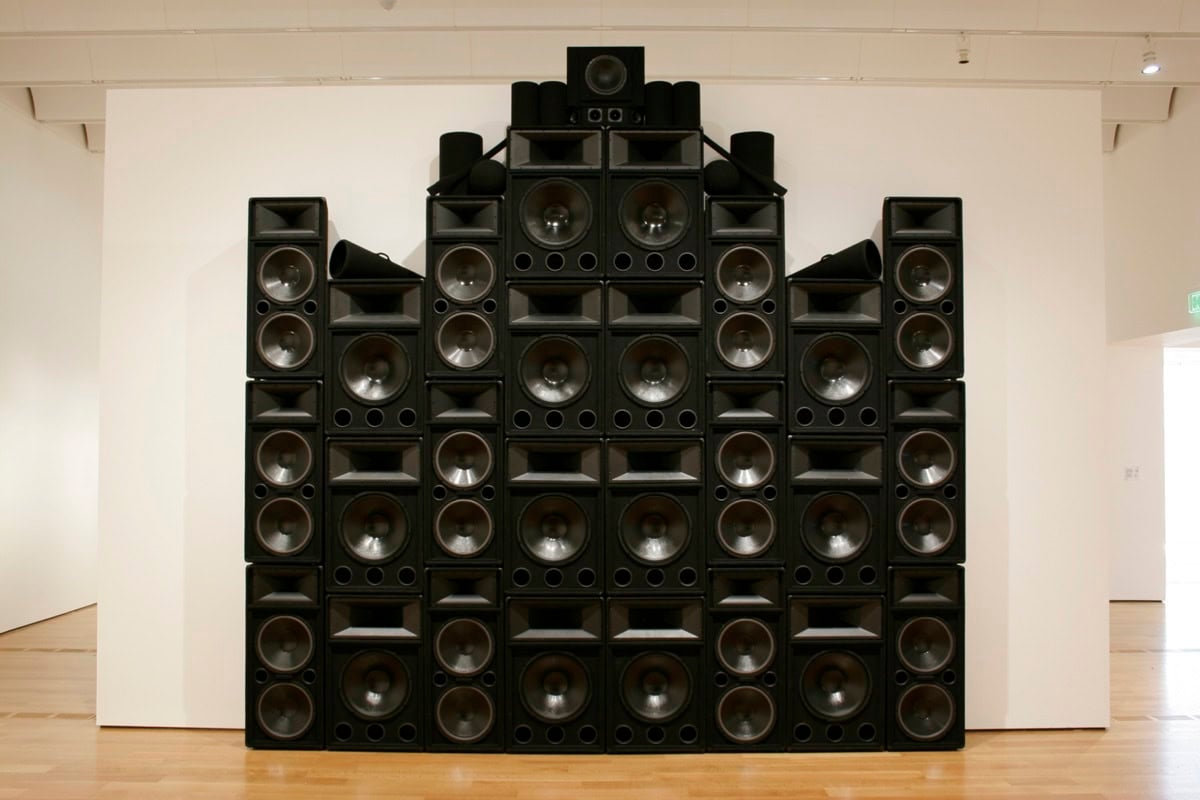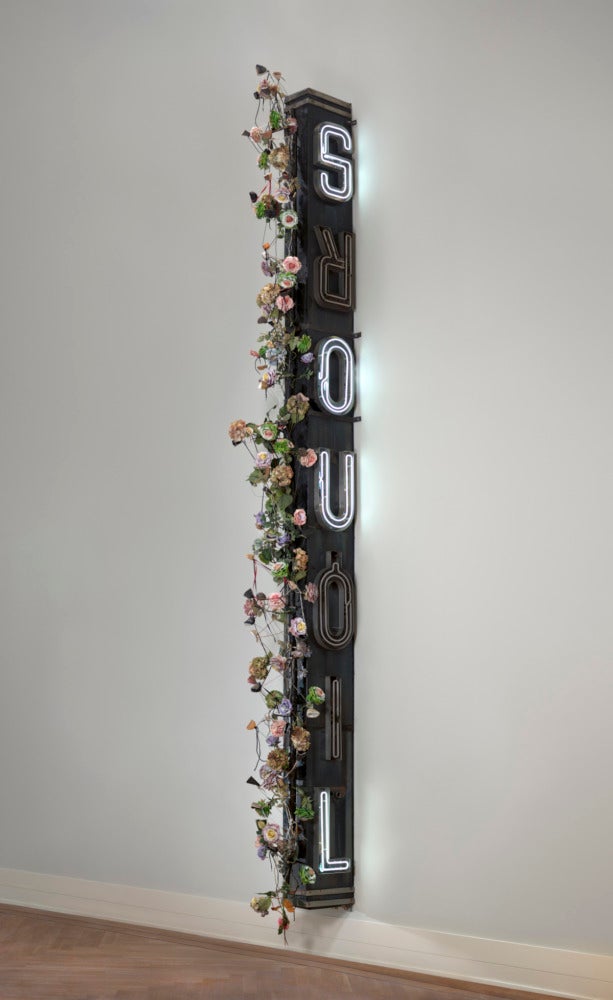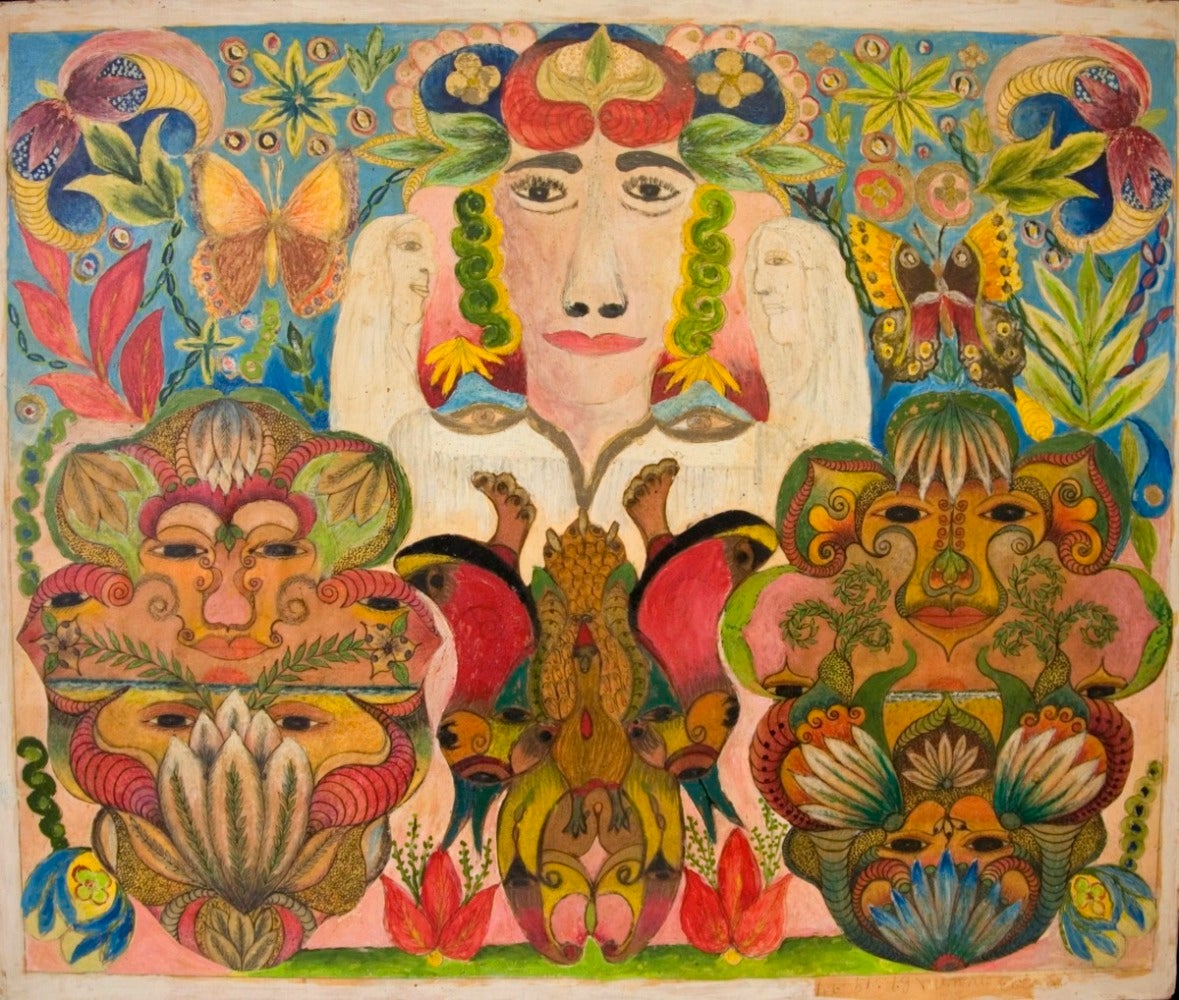
Despite being a mainstream force in pop culture worldwide, Southern hip-hop isn’t typically as carefully considered or contextualized as it is in The Dirty South: Contemporary Art, Material Culture, and the Sonic Impulse at the Virginia Museum of Fine Arts. With this exhibition, curator Valerie Cassel Oliver argues that there is a century-long history behind, say, a customized 1990 Cadillac Brougham d’Elegance—a “slab,” or an important symbol of Houston’s hip-hop culture—that the museum commissioned from former No Limit Records signee Richard “Fiend” Jones. The Dirty South puts that history on display with over 140 works, tracing the music genre’s roots to blues and gospel while also connecting them thematically to visual works by artists including William Edmondson, Thornton Dial, and Kara Walker. Oliver has been at the VMFA since 2017 and was at the Contemporary Arts Museum Houston for sixteen years prior to that. With The Dirty South, she is once again asking the arts world to expand its notions of what is worthy of being put on display at a fine arts museum—this time, with Southern hip-hop in the mix. She recently explained this by phone, as she walked Burnaway through her intentions and thought process behind the exhibition.
Christina Lee: It’s one thing to feature a Jonathan Mannion photo of 8Ball and MJG. It’s another to consider that photo among works by Thornton Dial and Sister Gertrude Morgan. What first got you thinking about these connections?
Valerie Cassel Oliver: Well, the question I had in my mind was around Southern hip-hop and how it distinguished itself in the larger framework of hip-hop. In other words, what makes Southern hip-hop Southern? It was really looking at the things that were really used almost in a way to be dismissive of artists in the South and embracing them, even though you would find rappers from the West Coast who were connected to the South. The Snoop Doggs, all of them have connections to Mississippi. A lot of these individuals are only one or two generations removed from the South. But it was something about Southern hip-hop that really did not rank, if you will, within the spectrum until the [1995] Source Awards happened and OutKast won [Best New Rap Group].

You already have these intersections taking place, yet there was such a chasm in terms of the market, in terms of the genres, the kind of specificity of space. It was either East Coast or West Coast. It was never the South. So my question was then, how did those artists distinguish themselves? Then it became apparent: The embracing of the land, the landscape, the topography of the land. The community, the architecture, 2Chainz and the Pink Trap House. It’s about community, but it’s also about architecture. It was about bringing in spirituality in a real way into the hip-hop scene. It was bringing the sacred into the profane in such a profound way. It was stunning to see that level of meditation. It was also talking about the Black body in terms of its history with the South. It’s looking back on history and honoring the perseverance and the creative energy that comes out of the South. It brought in elements of Christianity and blues and all of these other genres that were missing from East Coast and West Coast rap.

CL: I was going to ask about organizing the exhibition into these themes that you talk about. But what it sounds like is that you landed on these themes based on what was apparent in the music.
VCO: Exactly. I was drawing from what it is that they were meditating on, and that is what becomes the framework for digging deeper. If these things happen on a contemporary level and there is a dialogue between the sonic and the visual arts, how does that then manifest if we dig deeper, if we go through the blues, if we go through gospel? You get into blues musicians who are also object makers. You get into object makers who are also gospel singers. So there’s this synergy that’s happening between artists who are academically trained and artists who are not academically trained, who some people call folk artists. I like to call them intuitive intellectuals.
There’s a whole intellect in piecing together ideas and manifesting those things in a visual way. So it’s looking at the expressive and how to take that and embrace all of the things that were presented in the expressive, meaning in the music, in the movement and codifying that into the static object that literally pulsates. They’re the quilts that we can see that are literally pulsating with rhythm. So you really do see these things manifest, and that‘s what I was looking to capture. How is the expressive captured in the static and vice versa? If you’re going to talk about improvisation in music, there is also a visual parallel to that.
CL: I’ve noticed that you use terms like “intuitive intellectuals“ or “artists of the vernacular” when describing people who others may call folk artists. What’s the origin story behind such terms?
VCO: Well, I think there has been a new-found appreciation within museums for “folk artists.” I think on some level, it’s sort of a reaction to that. It’s to say that there is a space where these artists belong within the museums. There’s always this desire—I think it’s market driven in many ways—to create this sort of distinction between high art and low art. But for me, particularly, I think it’s important to go back and capture how those traditions really give rise to our understanding of ourselves as Americans and the expression that emerges in that wake. So much of what we understand as modernism, as the building blocks of contemporary art, really is given deference to Europe towards that. I’m trying to make an argument that we have the origins of modernism in our own backyard.
It’s about community, but it’s also about architecture.
To reframe it out of folk art, because I think it can easily get marginalized and dismissed, is partly to also honor the fact that these artists, without any “academic education” are creating works of art that literally rival or stand toe-to-toe with our most venerated icons of modernism. It really is to say, there is an intellect there. There is an intellect which is intuitive. Mind you, I don’t want to also side-swipe those artists who are going to the academy, because they come to the academy with their own intellect as well. But there’s always someone in the barbershop who’s well-read. They could sit there and give you commentary on the issues of the day and be spot-on, as opposed to someone who has studied the political events and history that can connect the dots with our journalism of the day. I’m making an argument that that happens on the visual art level, that happens on the aesthetic level. There is a real intellect that I want to honor with them.
CL: How do you want visitors to come away feeling or thinking about after they’ve seen this exhibition?
VCO: Well, it’s so interesting. We’ve gotten a lot of responses that the exhibition is deeply moving, because you see the Black brilliance on display. Every work in the exhibition is deeply impactful in its own right. Then you bring in a whole emotional element of this, which is really speaking to the insistence on creative expression, the insistence of self and understanding of self, even in the wake of all of the energies around subjugating, just drawing, erasing, and perpetrating violence against Black bodies.

Again, this [exhibition] spans from 1920 to 2021. So you see this arc that in the wake of all this insanity, we can still create joy. We can still create amazing, spectacular presentations of self. We carry these fragmented histories that manifest in very interesting ways. These conversations are ongoing conversations that people thought were the impetus for “Strange Fruit” in the 1920s. These things are still ongoing, and we’ve been discussing them and talking about them, and artists really discussing and talking about them in very profound ways for a very long period of time. But whereas you often see this work over here in the context of that, or this work just over here in the context of that, suddenly when you put them all together… well, let’s put it this way.
At the end of the exhibition is the work by Arthur Jafa called Love is The Message, The Message is Death. It is a series of commercial and vernacular moving image clips—”commercial” meaning the earliest films related to race, whether it’s Gone with the Wind or any other sagas dealing with Blackness and whiteness in the early 1900s, to the shooting of Walter Scott. You string all of these things together, to spaces of release—whether that release comes in the aesthetic of the church or whether that release comes in the dance hall, where you’re just looking for unbridled desire to release all the anxiety. All of that is set to Kanye West’s “Ultralight Beam.” When you bring in that chorus and how that moves you… I think that piece encapsulates everything that people have been, or what I hope that they will experience as they walk through.
It’s a very powerful thing to see this chorus of artists and how they impact the sensibilities of those who are coming to see them, despite one’s ethnic backgrounds. It especially hits hard.




